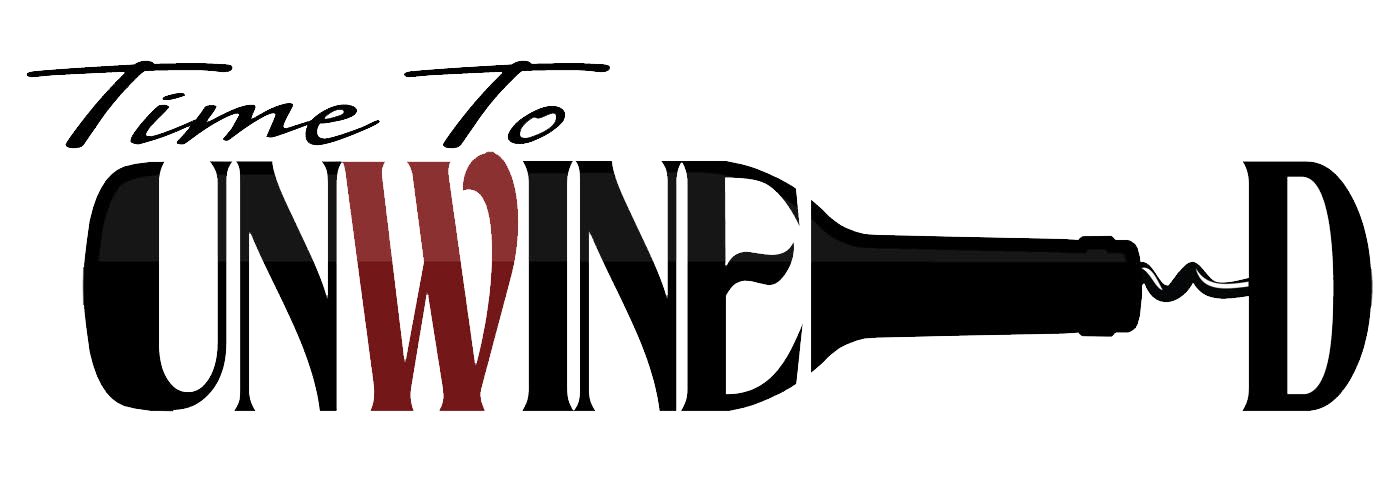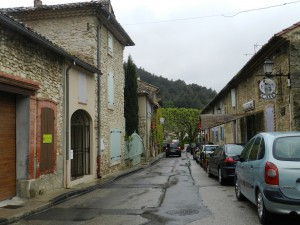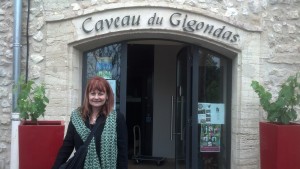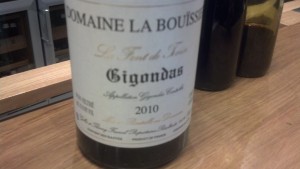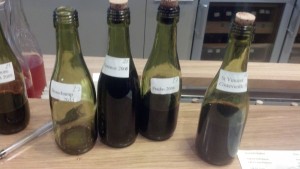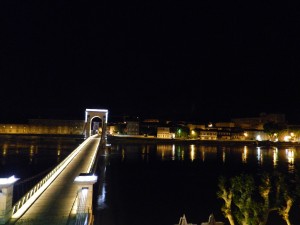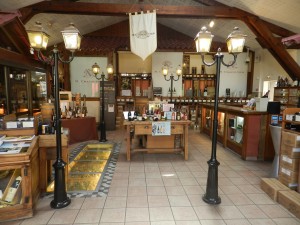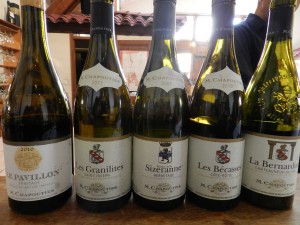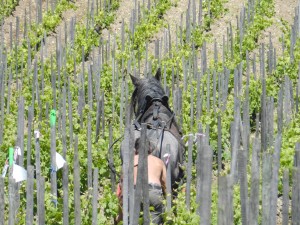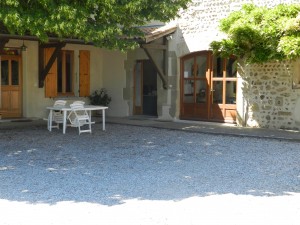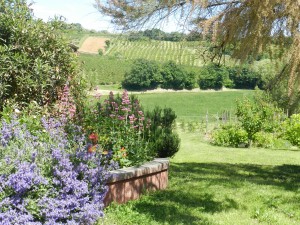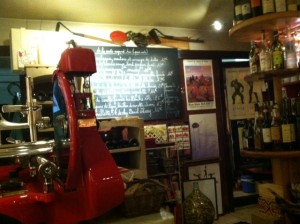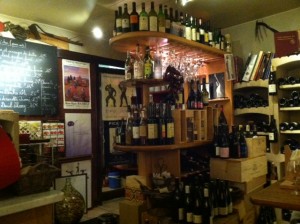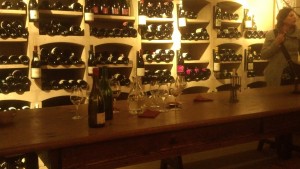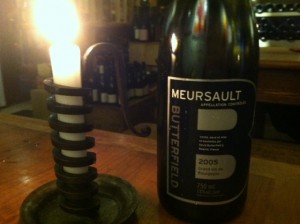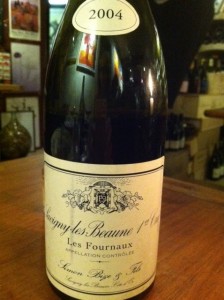Tasting Paso Robles
I attend a lot of wine tastings around Florida and beyond, and the tastings at Tim’s Wine Market in Orlando are always very special. Tim has loads of wine credentials and an enormous wealth of knowledge, which make his tastings very informative, but he always adds a fun factor too!
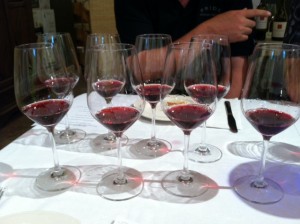 Last week he hosted a tasting “What I Did On My Summer Vacation”. I got a kick out of his subtitle “Three days in Paso Robles I barely remember and will never forget”!
Last week he hosted a tasting “What I Did On My Summer Vacation”. I got a kick out of his subtitle “Three days in Paso Robles I barely remember and will never forget”!
The Paso Robles AVA is located in San Luis Obispo County, about 3½ hours south of San Francisco and 2 hours north of Santa Barbara. Set farther inland than other parts of the Central Coast, Paso Robles is shielded from the cool, maritime influence of the Pacific Ocean by the Santa Lucia Range to its west. The days are long, hot and dry, but the nights are usually chilly which provides the perfect temperature for Cabernet Sauvignon, Zinfandel, Syrah and other Rhone varietals.
First on the agenda was a brief history of the region, while we sipped the pleasant 2011 Clayhouse Winery Adobe White, which retails for $15.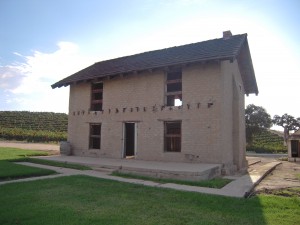
Tim then moved on the sharing some fun facts about the wineries, while we tasted a few from each he visited.
Clayhouse Winery has many, many acres of vineyard, and only uses between 5 – 10% for their own wines. The rest of the grapes they sell to other wineries. Their name comes from a 150 year old adobe structure that sits in the middle of their vineyard acreage, which has become their symbol. Other Clayhouse wines we tasted were:
2010 Clayhouse Malbec ($15) This wine (100% stainless steel) has cherry and raspberry on the nose and it’s very bright fruit explodes on the palate.
2010 Clayhouse Cabernet Sauvignon Paso Robles ($15) With grapes from their Red Cedar Vineyard, this wine spent 12 months in oak and has aromas of raspberry and cherry. These fruits also come through on the palate, along with licorice, vanilla and spice.
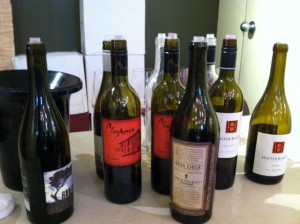 Sans Liege Winery is a one-man operation. That man is Curt Schalchlin, whose passion for the vine and vision of being a partner with the fruit is aiding him to make some very intriguing wines. His other label is Groundwork, and here’s what we tasted:
Sans Liege Winery is a one-man operation. That man is Curt Schalchlin, whose passion for the vine and vision of being a partner with the fruit is aiding him to make some very intriguing wines. His other label is Groundwork, and here’s what we tasted:
2012 Groundwork Grenache Blanc ($20) – Aromas of passion fruit, pear and melon come from the glass. On the palate was baked apple with a hint of cinnamon. It was delightfully like eating apple pie. This wine was fermented for 14 days (which is very long) and has lees contact for 14 months. The acidity and alcohol are balanced perfectly.
2010 Groundwork Grenache ($20) – On the nose of this wine are chocolate covered cherry, fresh raspberry and rose petal. The rich palate has some licorice and sweet fruit. The almost 15% alcohol sounds shocking, because the harmony in the glass keeps the wine from being too hot.
2010 Sans Liege Pickpocket Grenache ($49) – One of my favorite wines of the night, this was a big wine full of ripe red fruit, spice and some wet earth to balance it all out. This is a lovely wine.
Halter Ranch Winery is located in the heart of Paso Robles’ Westside Adelaida District. They make estate-grown wines, which are sustainably grown. Their winemaker, Kevin Sass, was formerly the winemaker for Justin Winery. Their wines of the night were: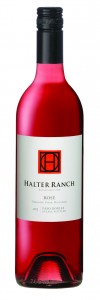
2012 Halter Ranch Rosé ($18) – This is a salmon colored wine made of 68% Grenache, 15% Mourvedre, 12% Picpoul Blanc and 5% Syrah. With strawberry, watermelon and a touch of pipe tobacco on the nose, this is a refreshing, crisp Rosé that reminds me a lot of the Rosés I drank earlier this summer in Provence.
2011 Halter Ranch Synthesis ($25) – This is a blend of 78% Cabernet Sauvignon and 22% Syrah. The nose is spicy, which also comes through on the palate, along with some cherry and plum.
2009 Halter Ranch Syrah ($29) – Aromas of plum, black currant and black olives, with cherry and vanilla on the palate, this is a pleasing wine. There is also a little pepper on the finish.
AmByth Estate Winery is certified Biodynamic and 100% dry-farmed. Their wines are 100% Estate, unfiltered, unfined and use native yeast. “AmByth
is a Welsh word meaning ‘forever’, so it’s the perfect name for this winery. Owners Phillip Hart and his wife Mary are passionate about keeping the land healthy for the rest of their lives, as well as future generations. And their wines rock! 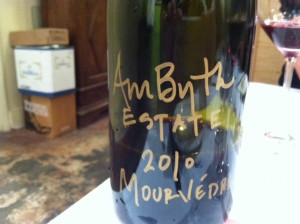
2010 AmByth Estate Viognier ($34 at winery) – This wine spent 16 weeks with the skins, which is very rare for a white wine. The honeysuckle and gardenia leap from the glass and compliment the peach on the palate. No sulfites are added to this wine. This is one of the best bottles of California Viognier I’ve ever had.
2010 AmByth Playground (N/A) – A Mourvedre blend (70% Mourvedre) this is a fabulous wine with raspberry and earth, along with an essence of caramelized white mushroom. The Playground will benefit with more time in the bottle, or some serious decanting. This was another favorite of mine.
2010 AmByth Mourvedre (N/A) – Another wine in need of time or decanting, this shows some cherry, soil and sage.
I bought a bunch of these wines, and Tim did a great job of making me want to visit each of these wineries the next time I head to the Central Coast region.
You can check out more about Tim’s at: www.timswine.com
